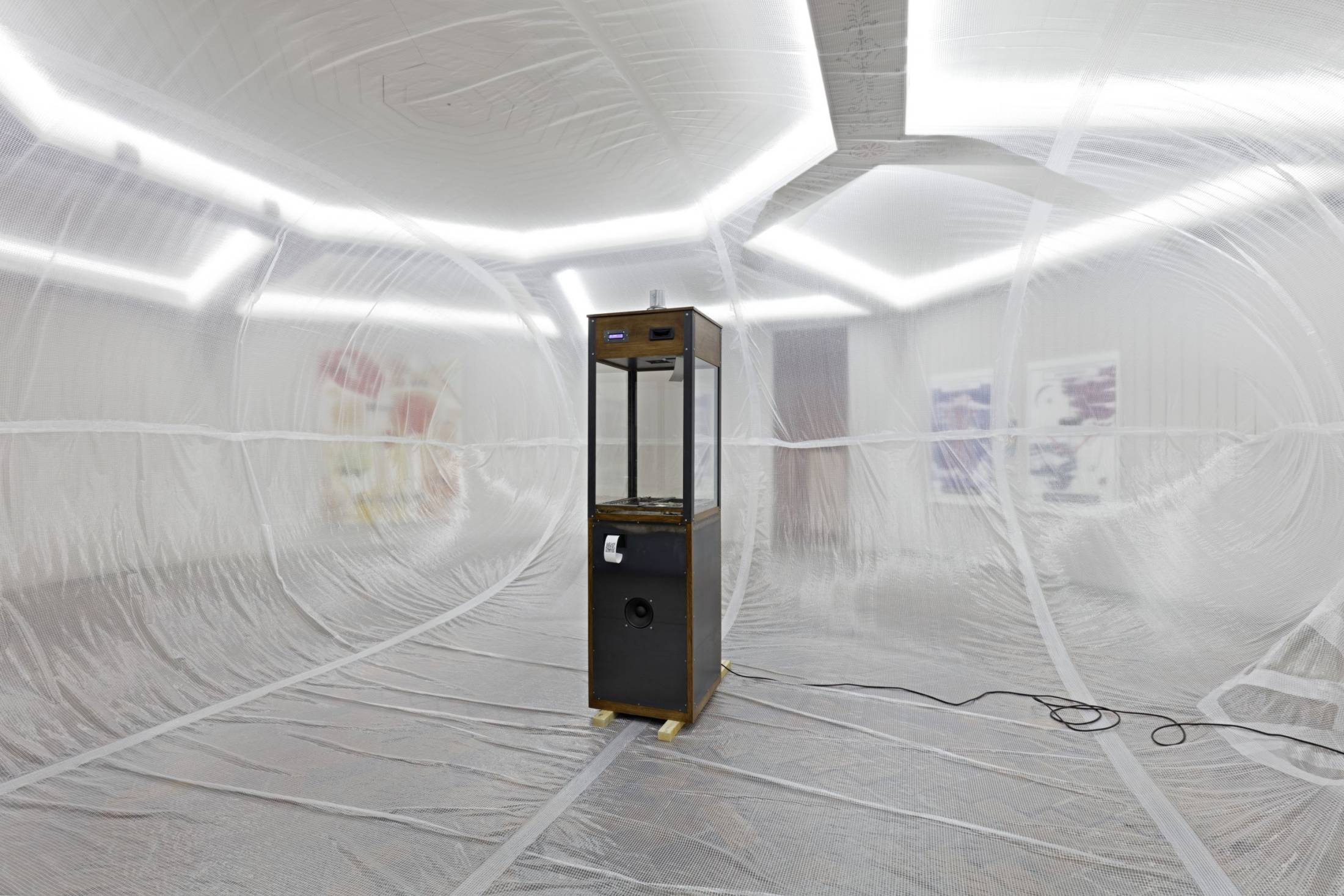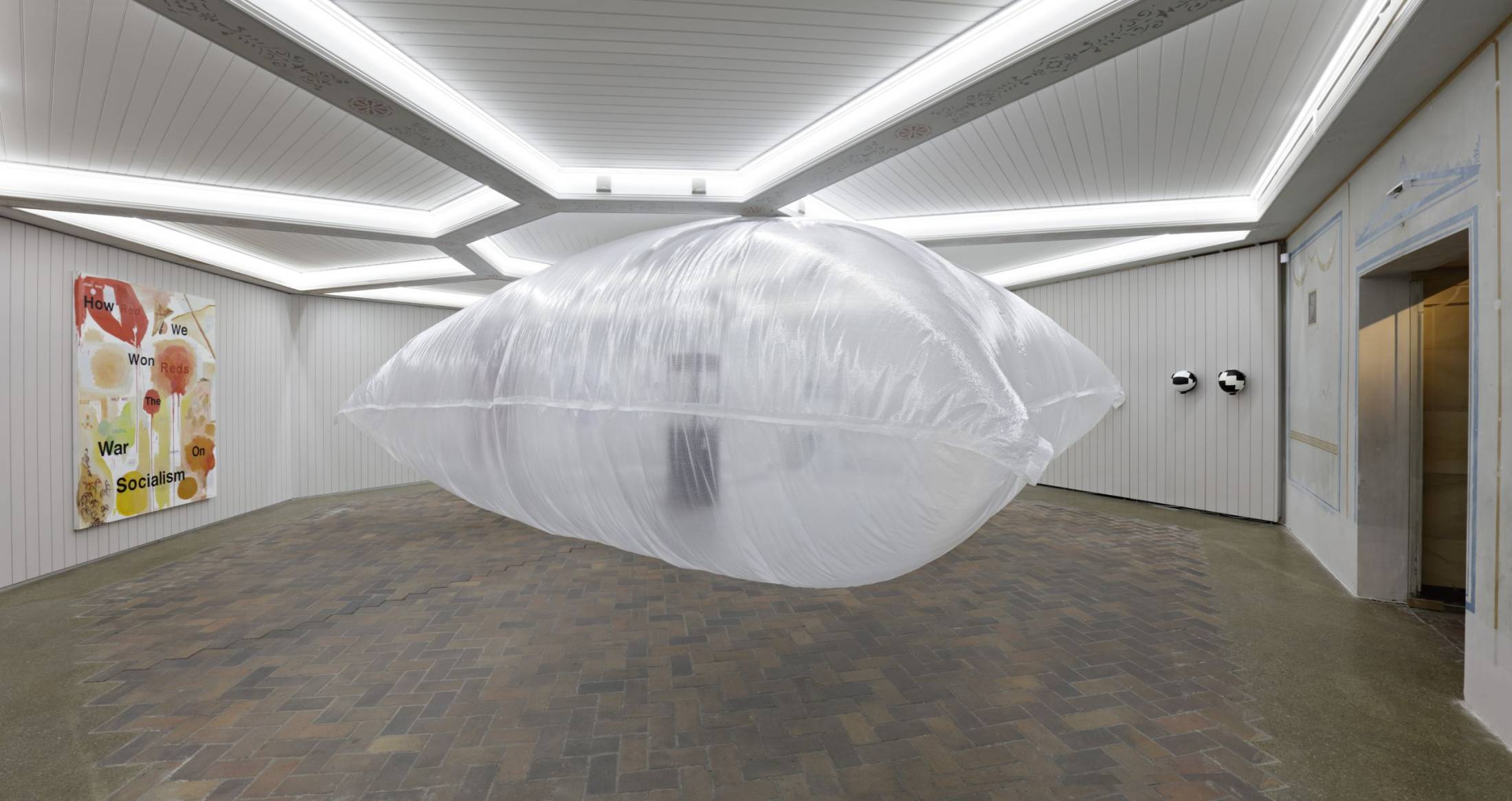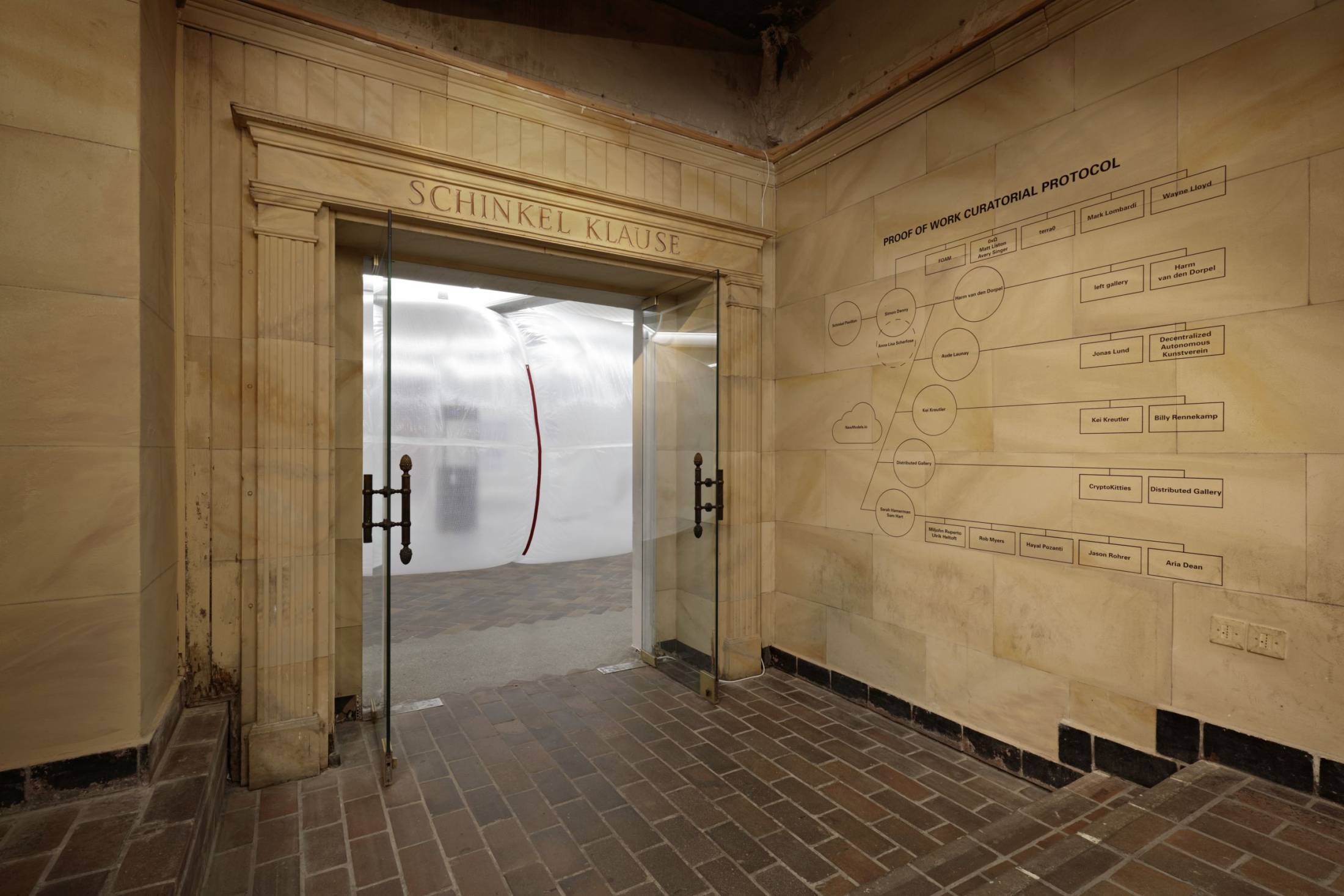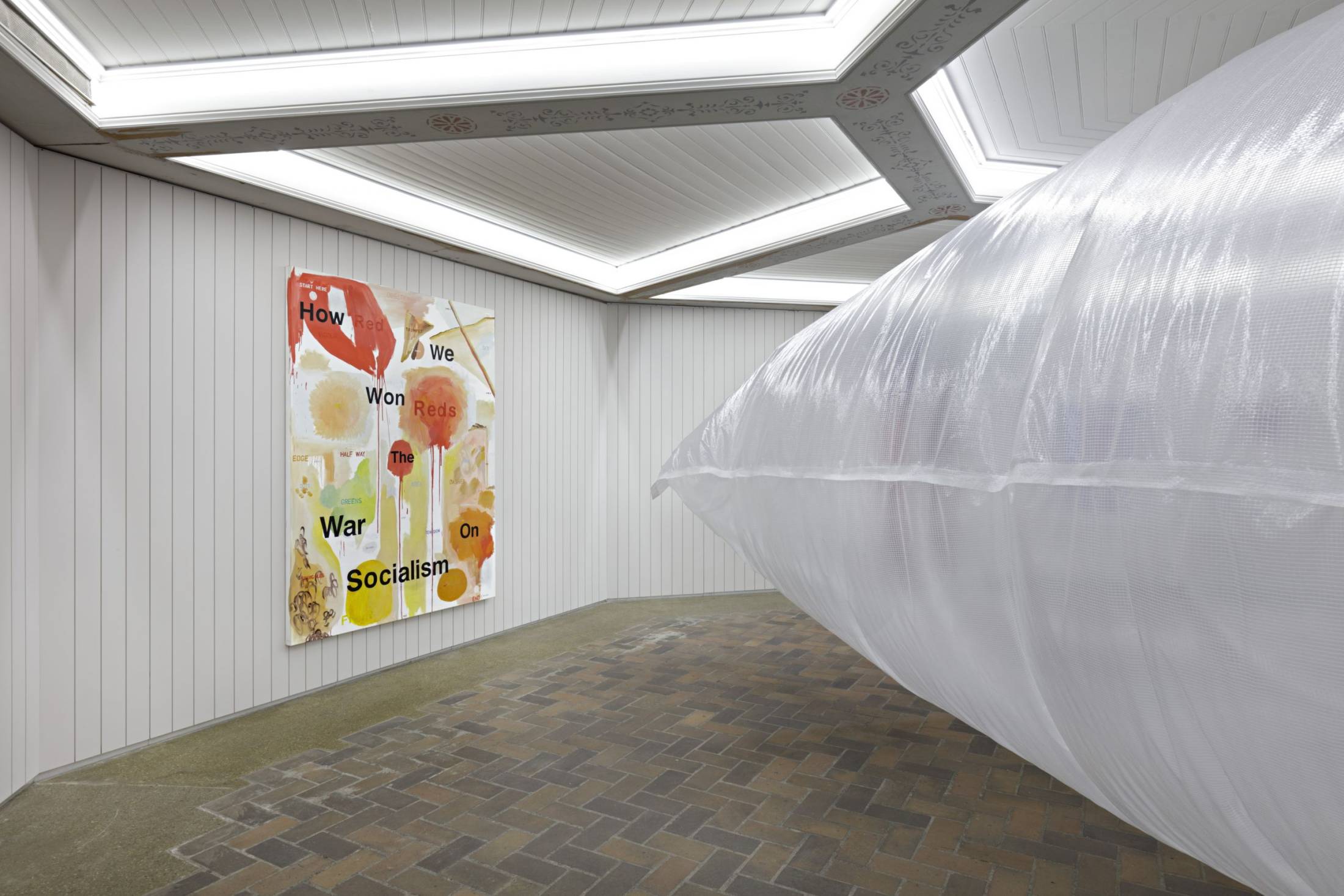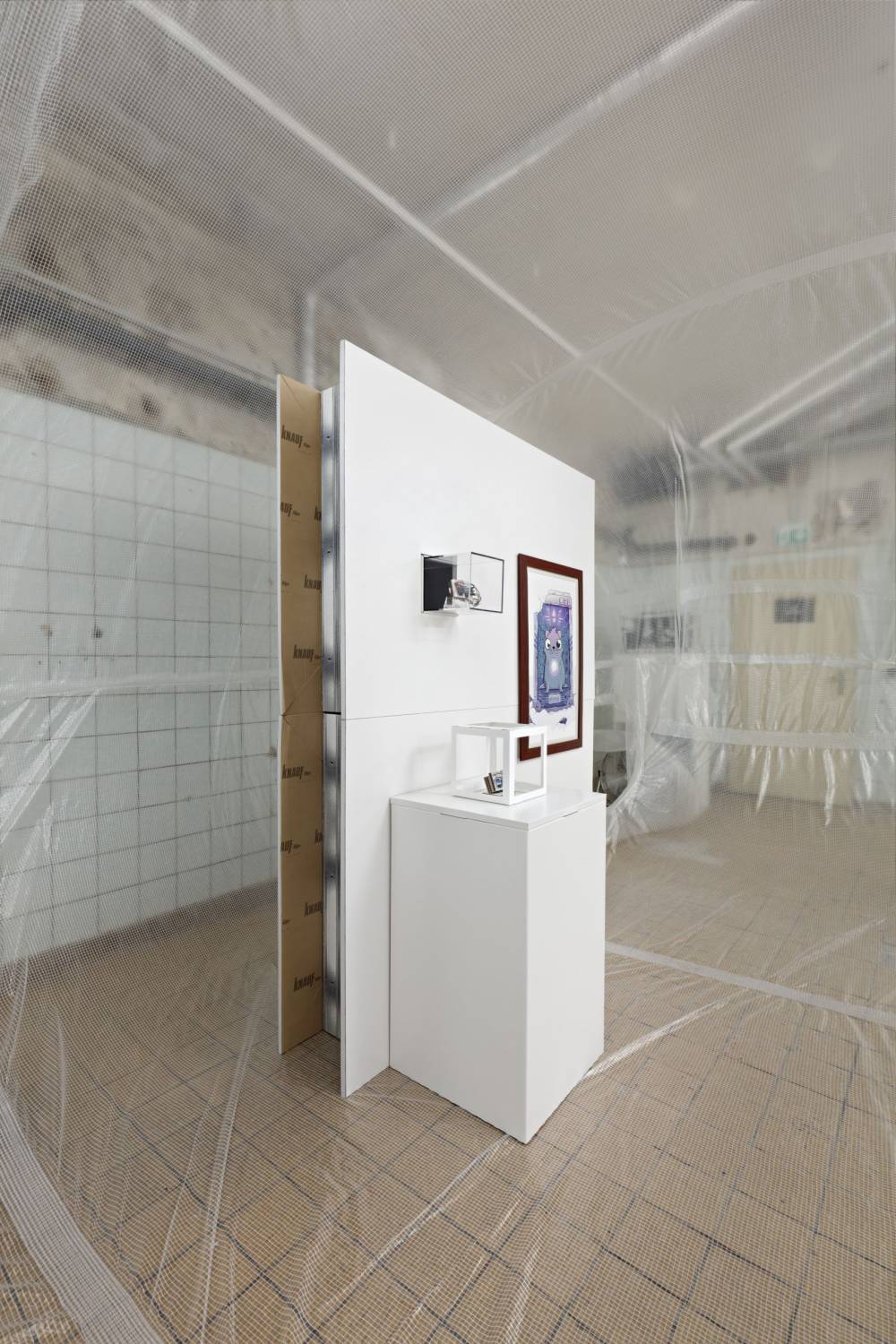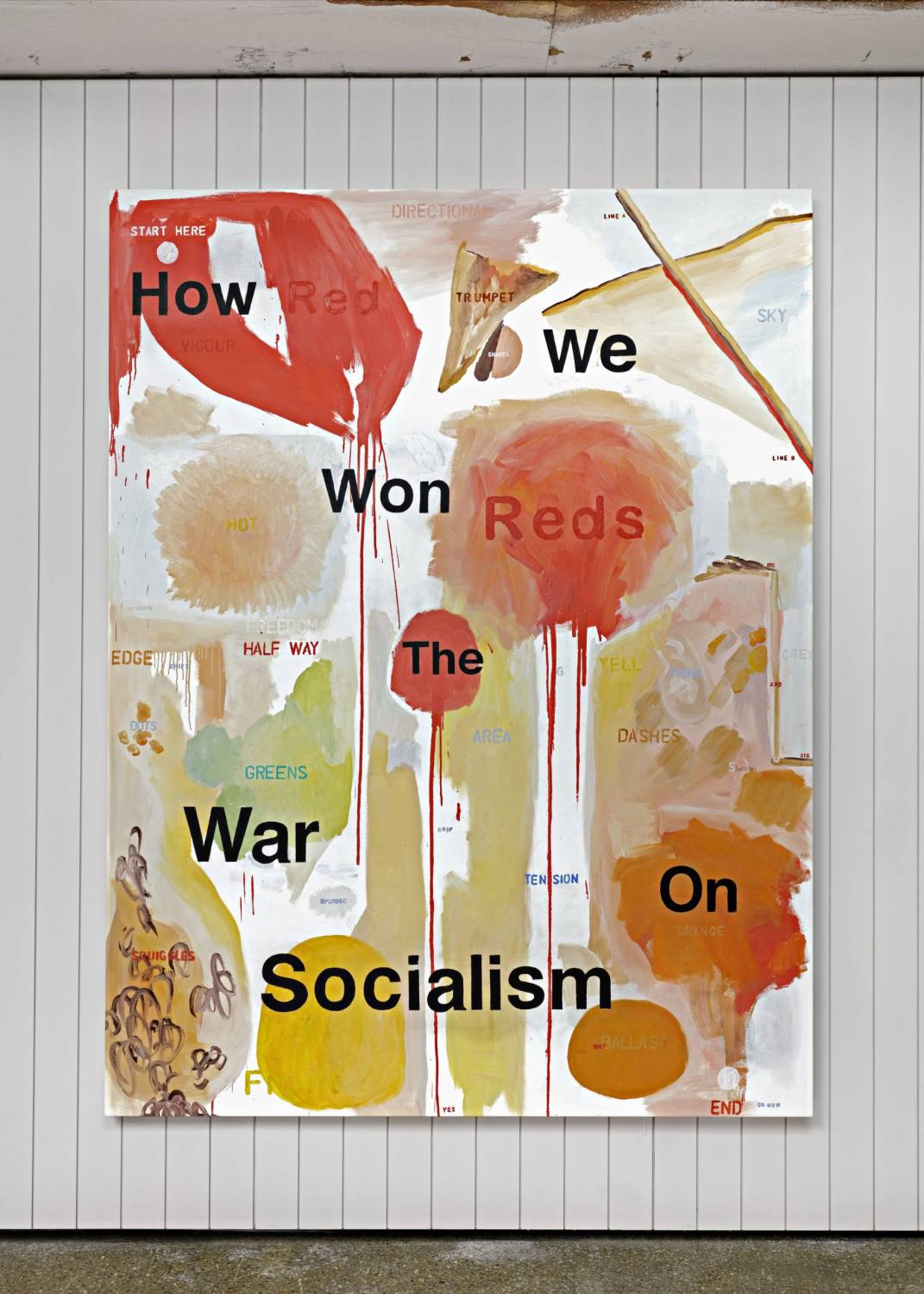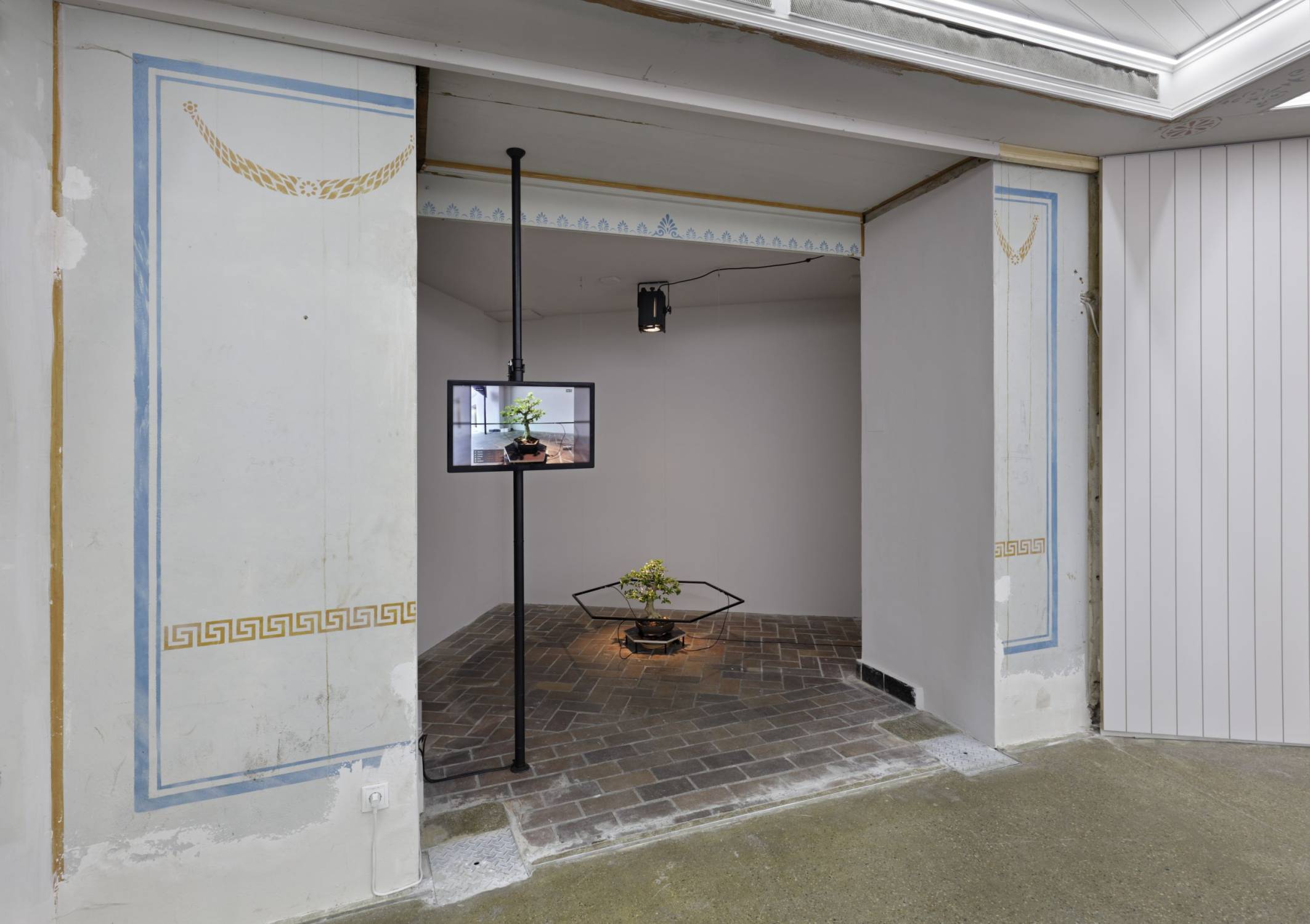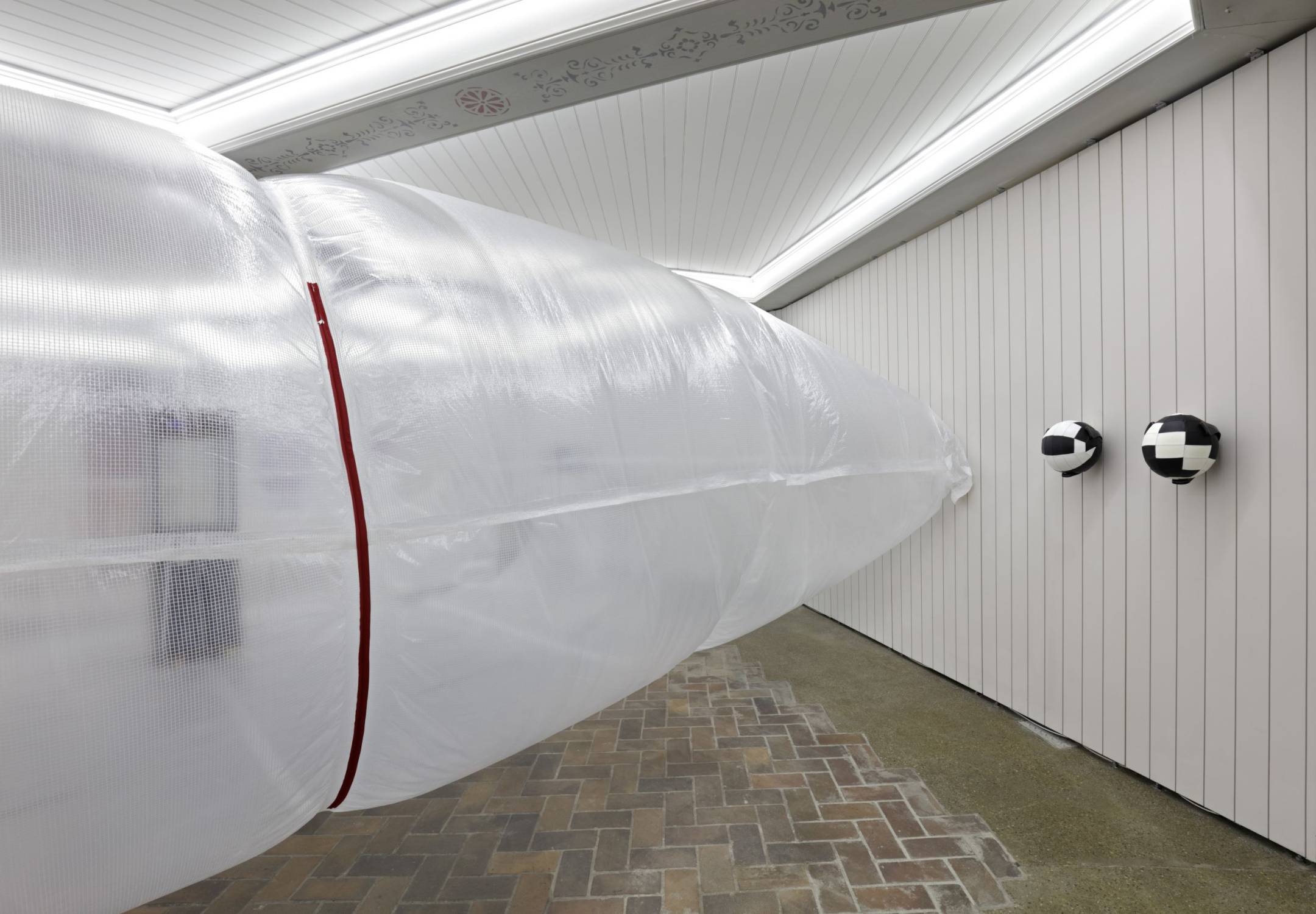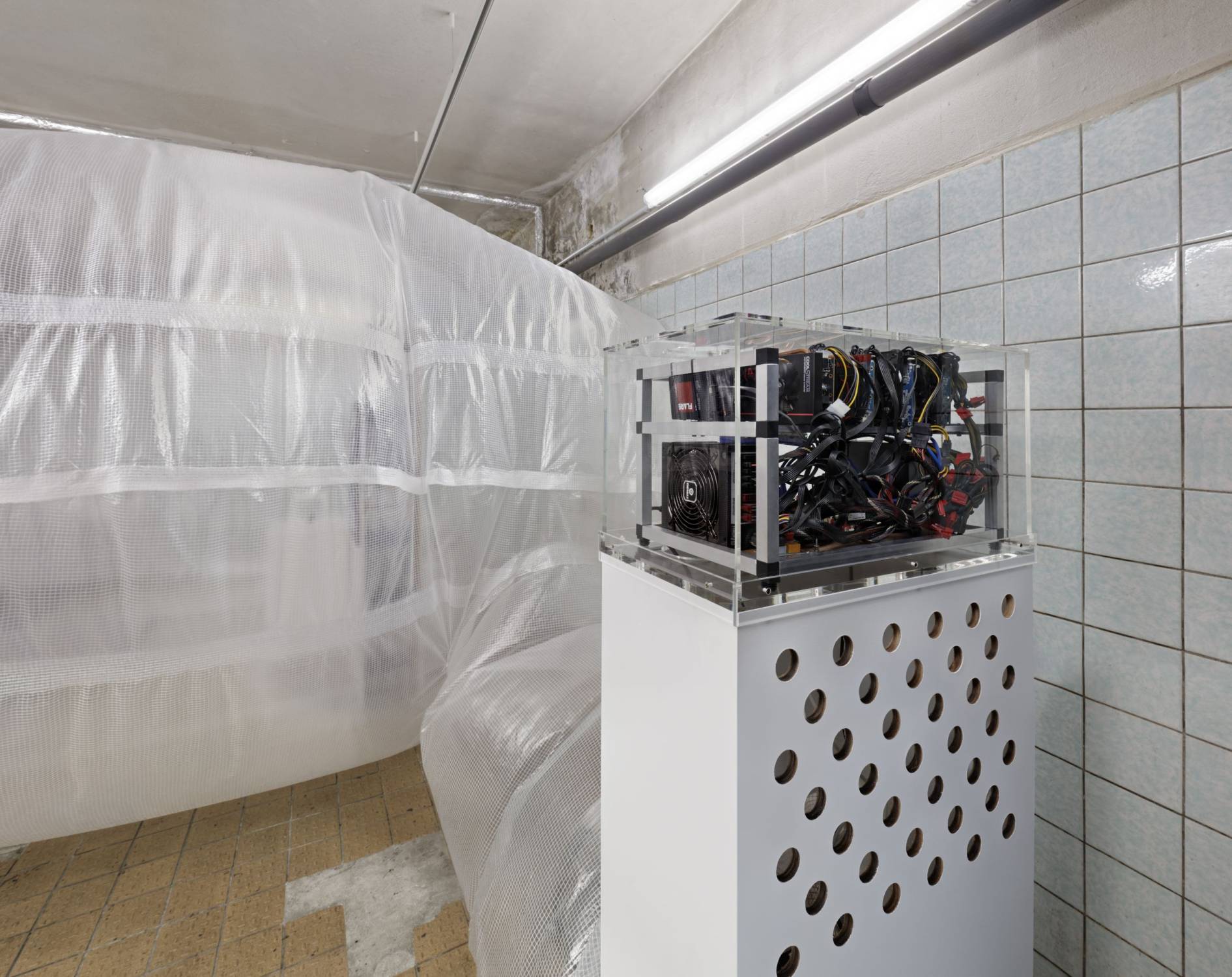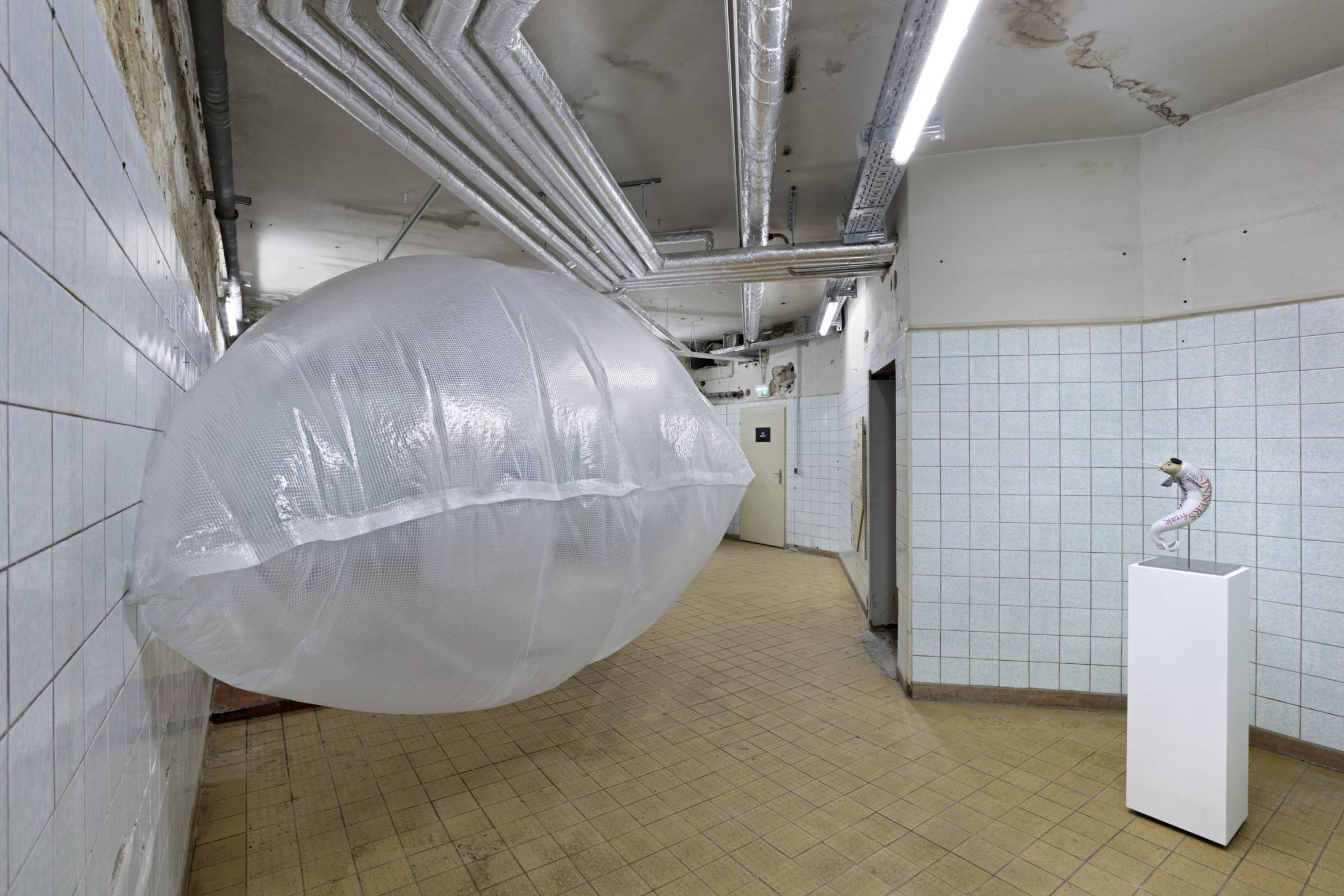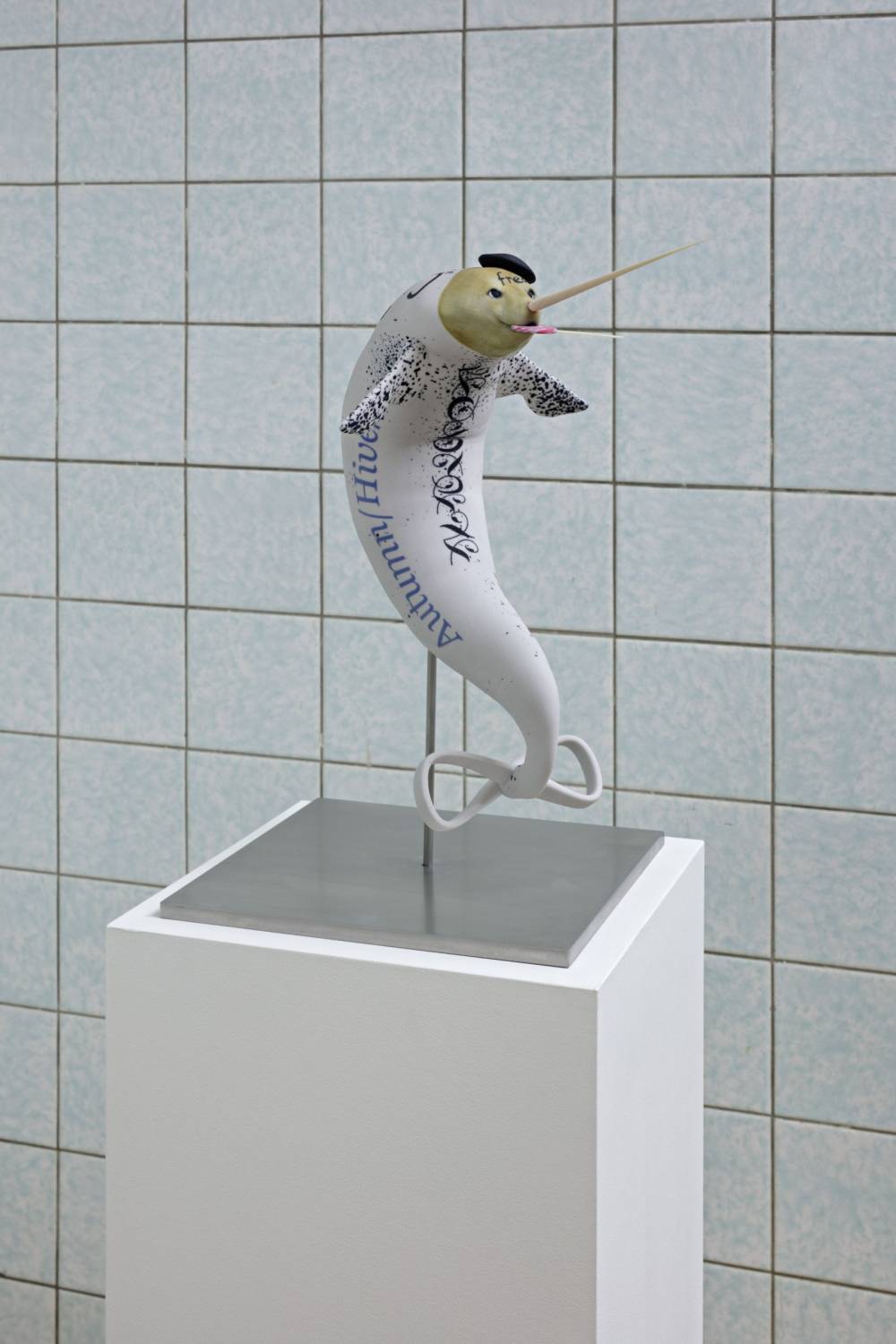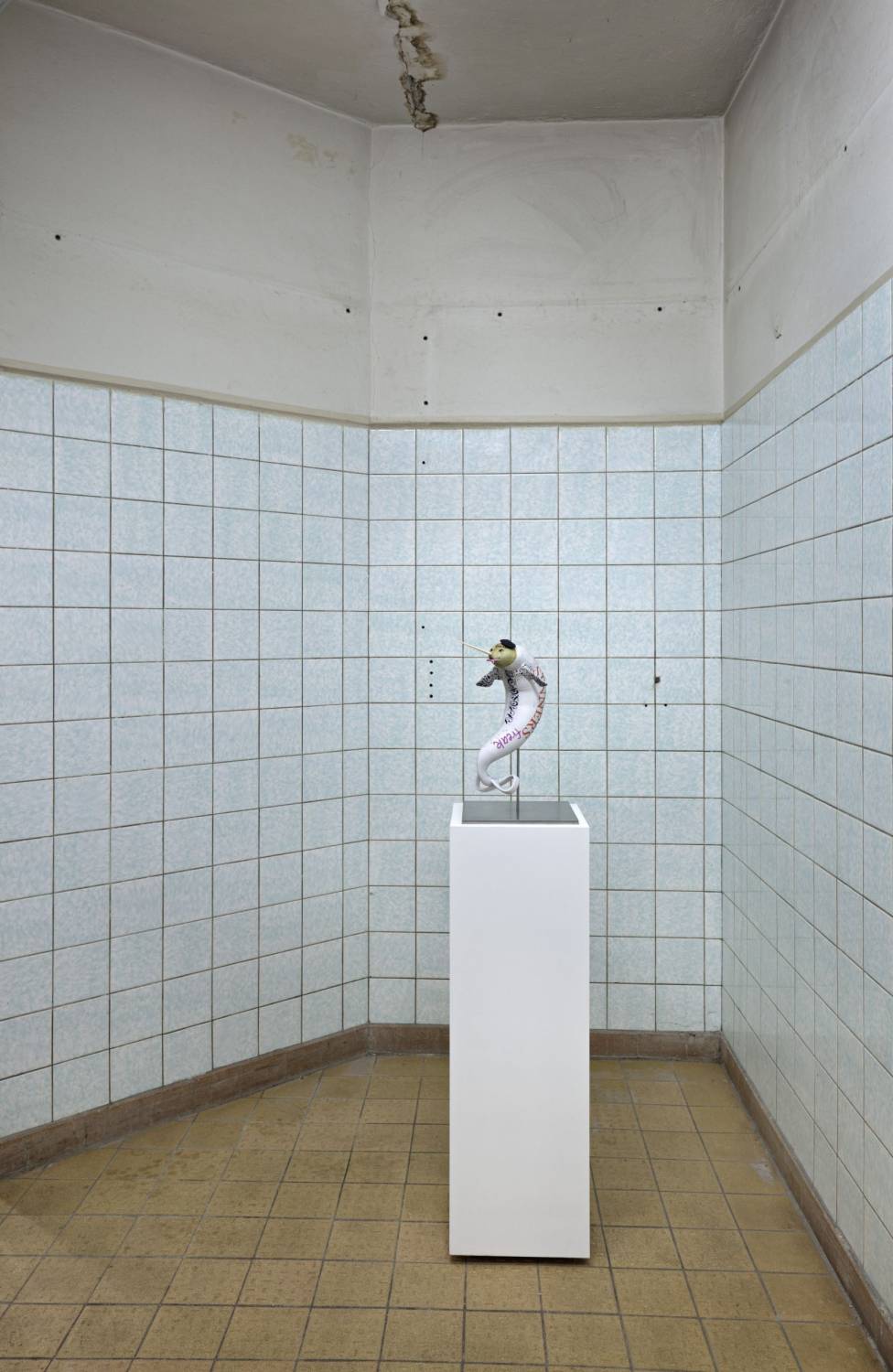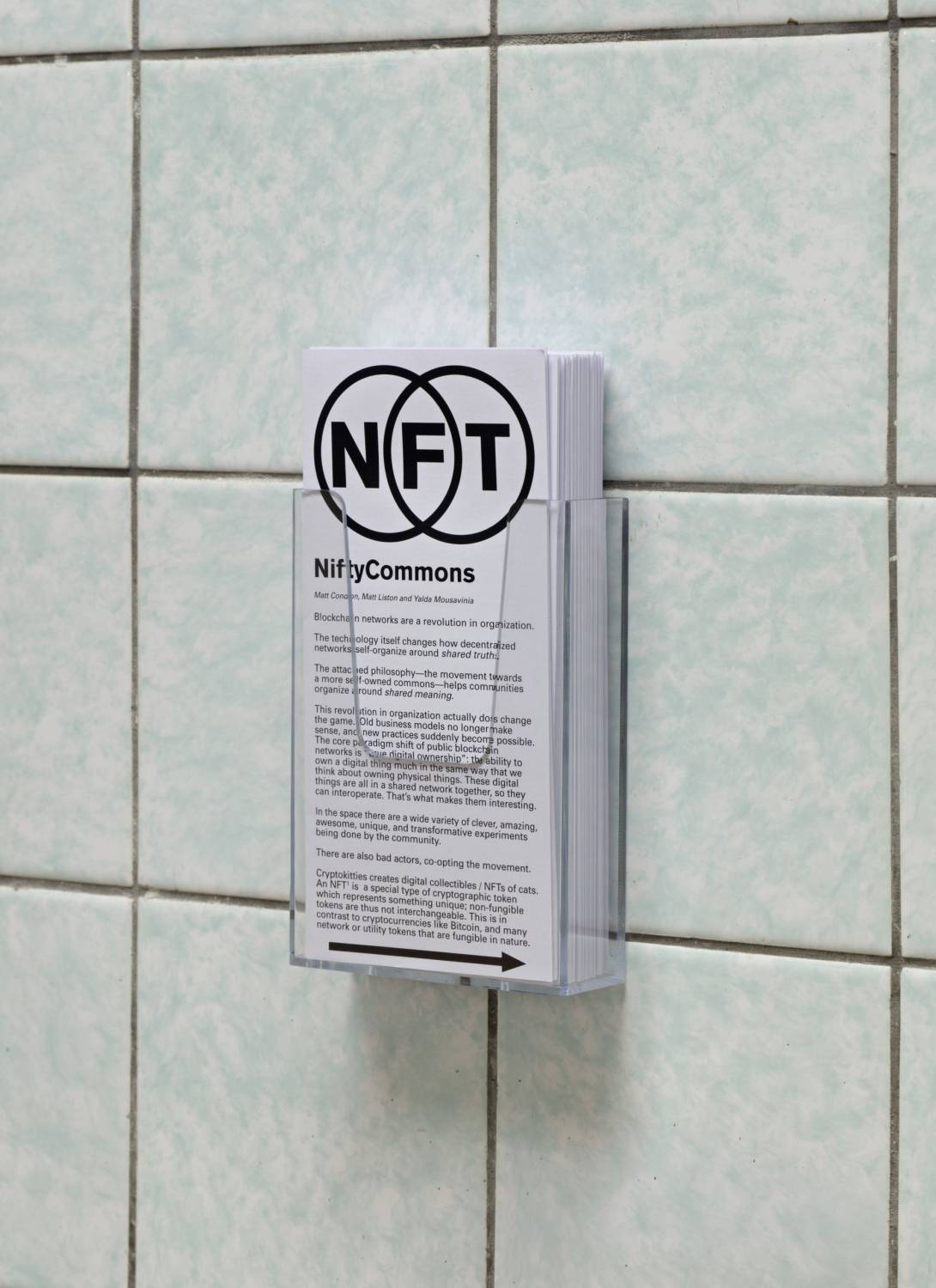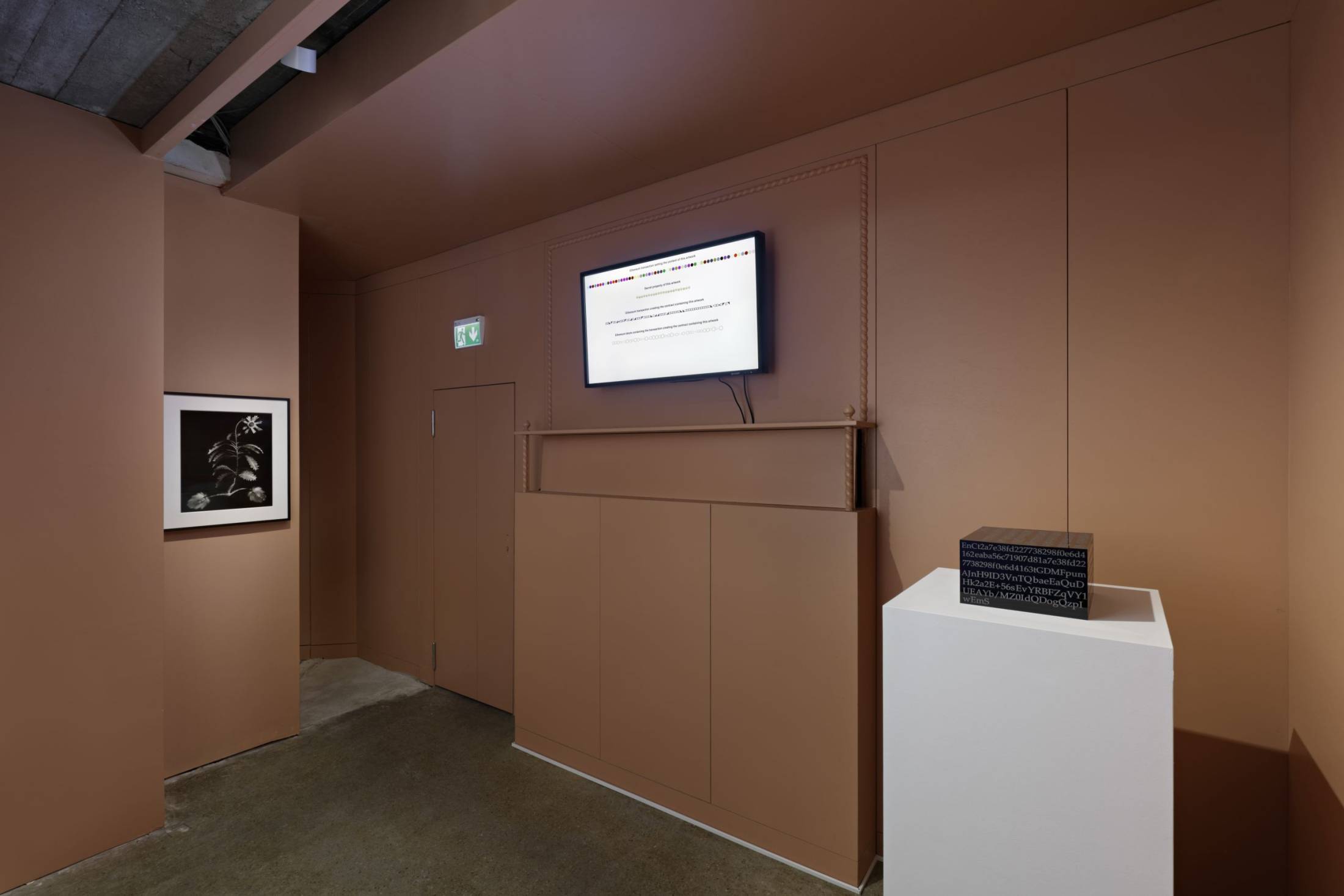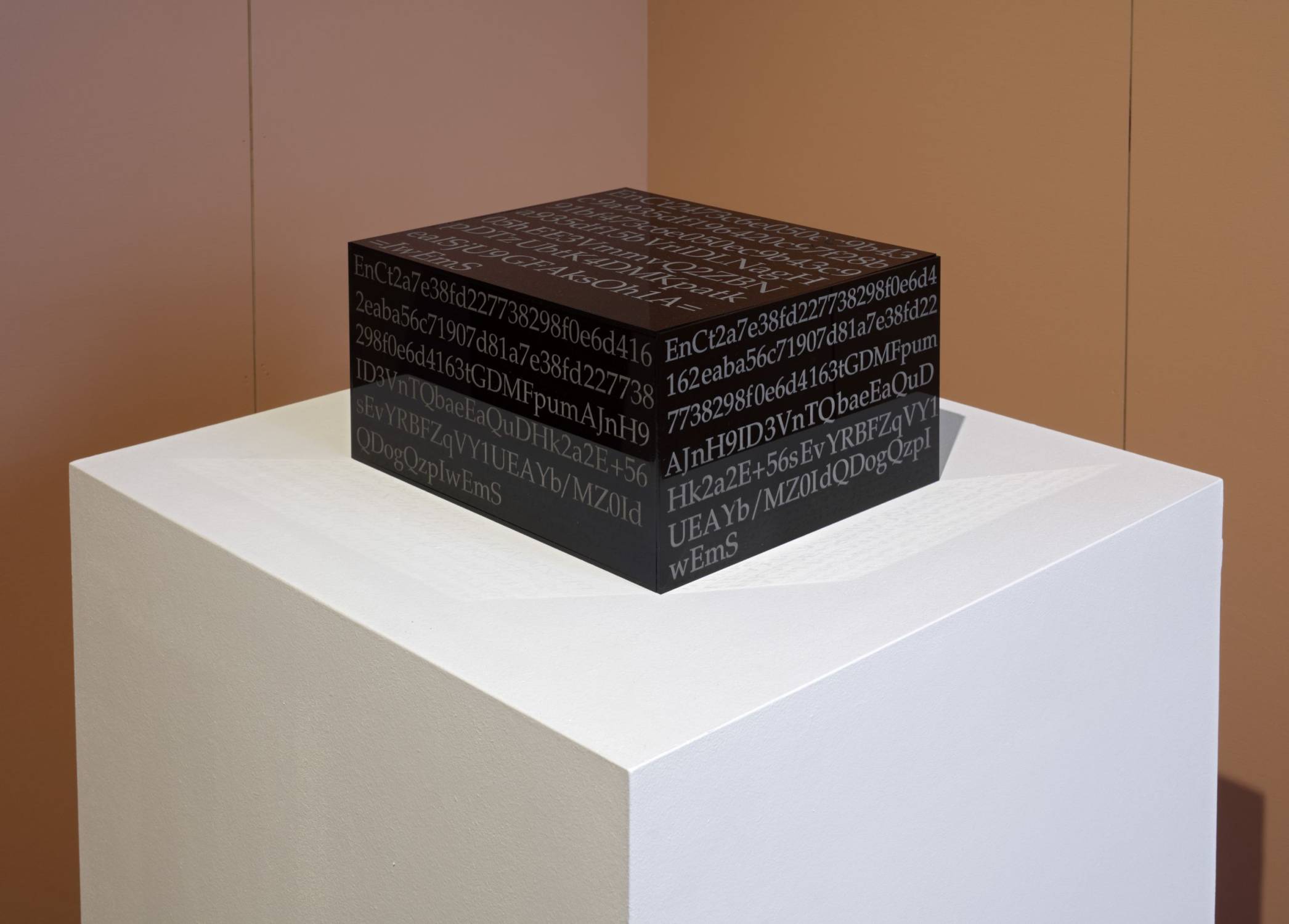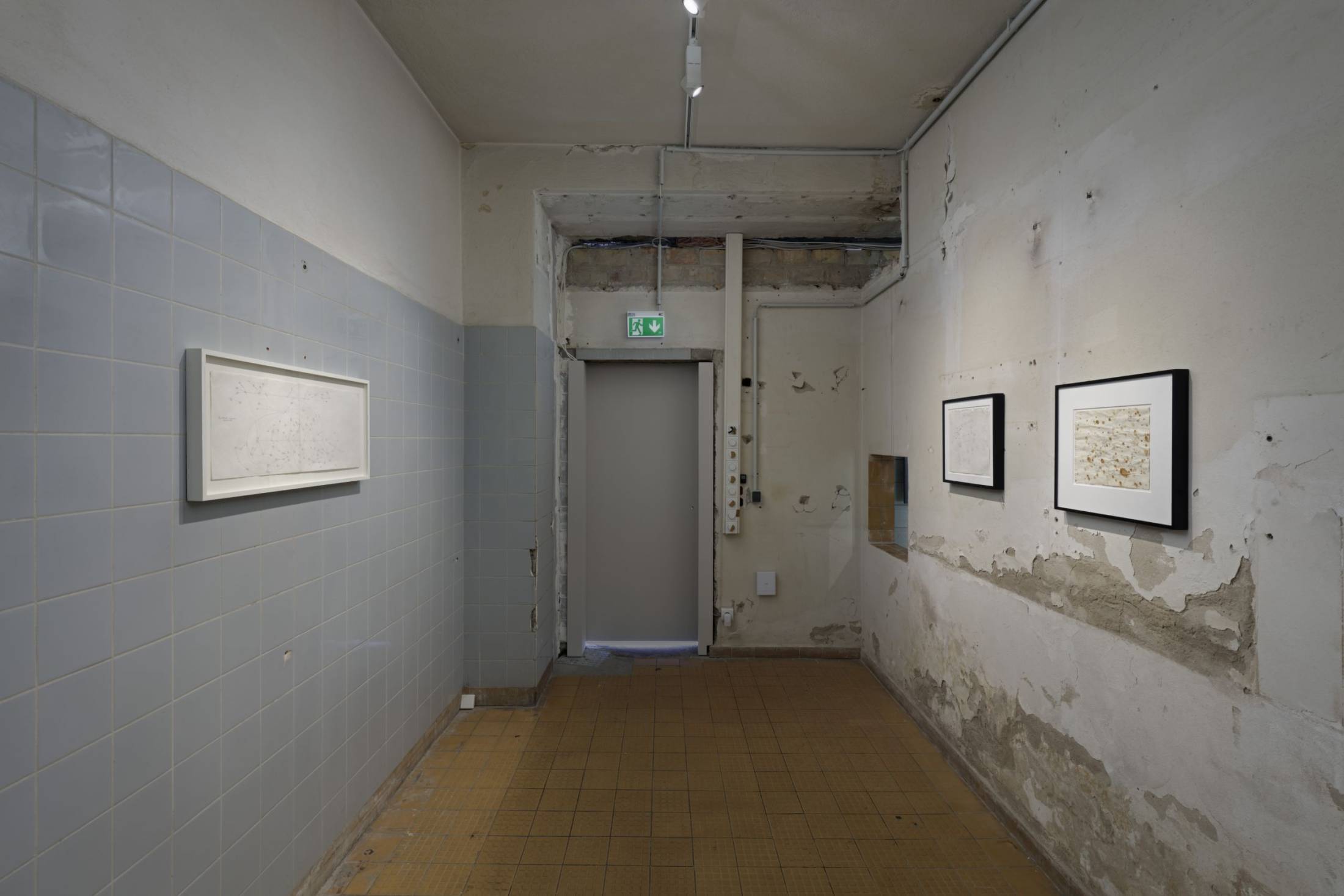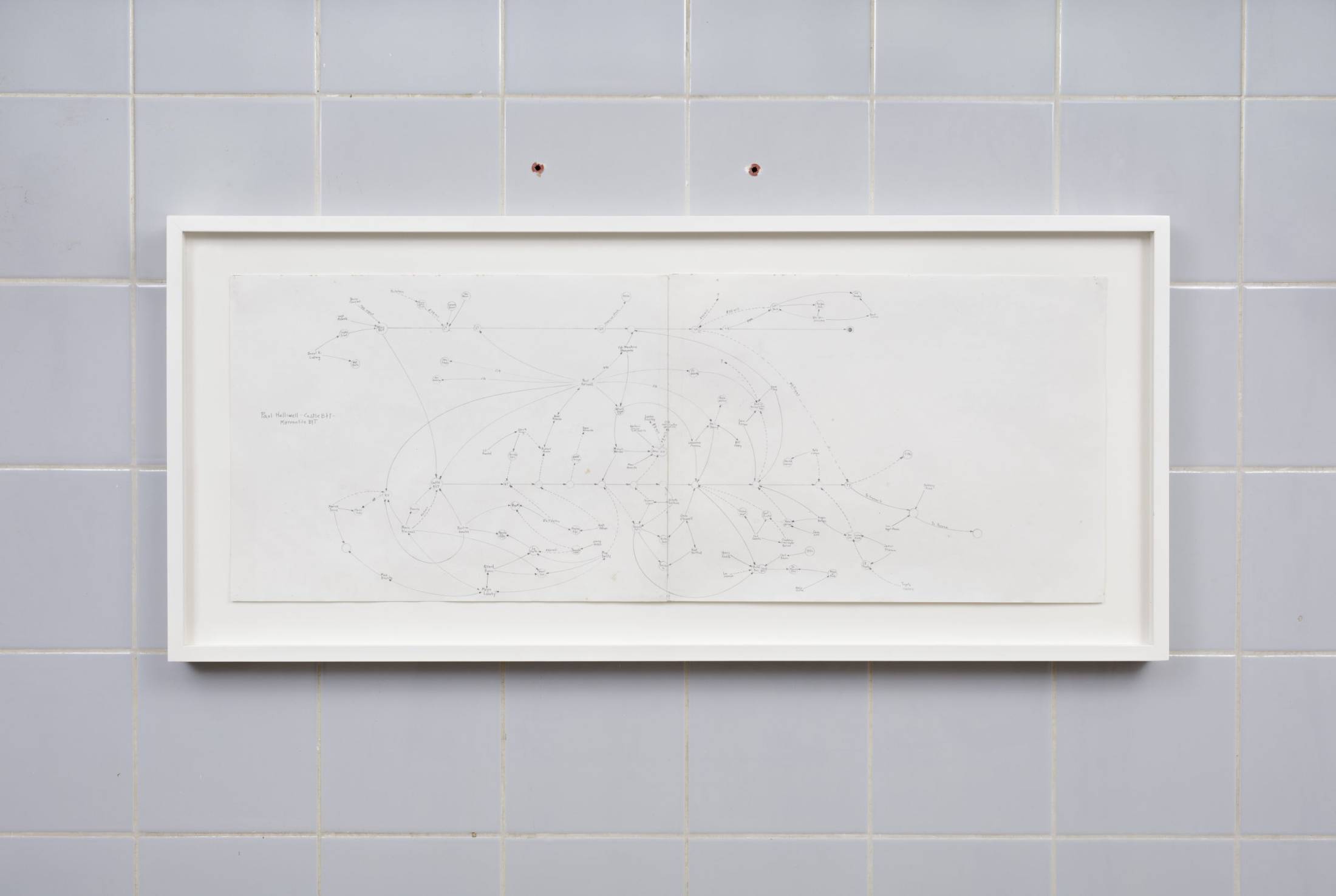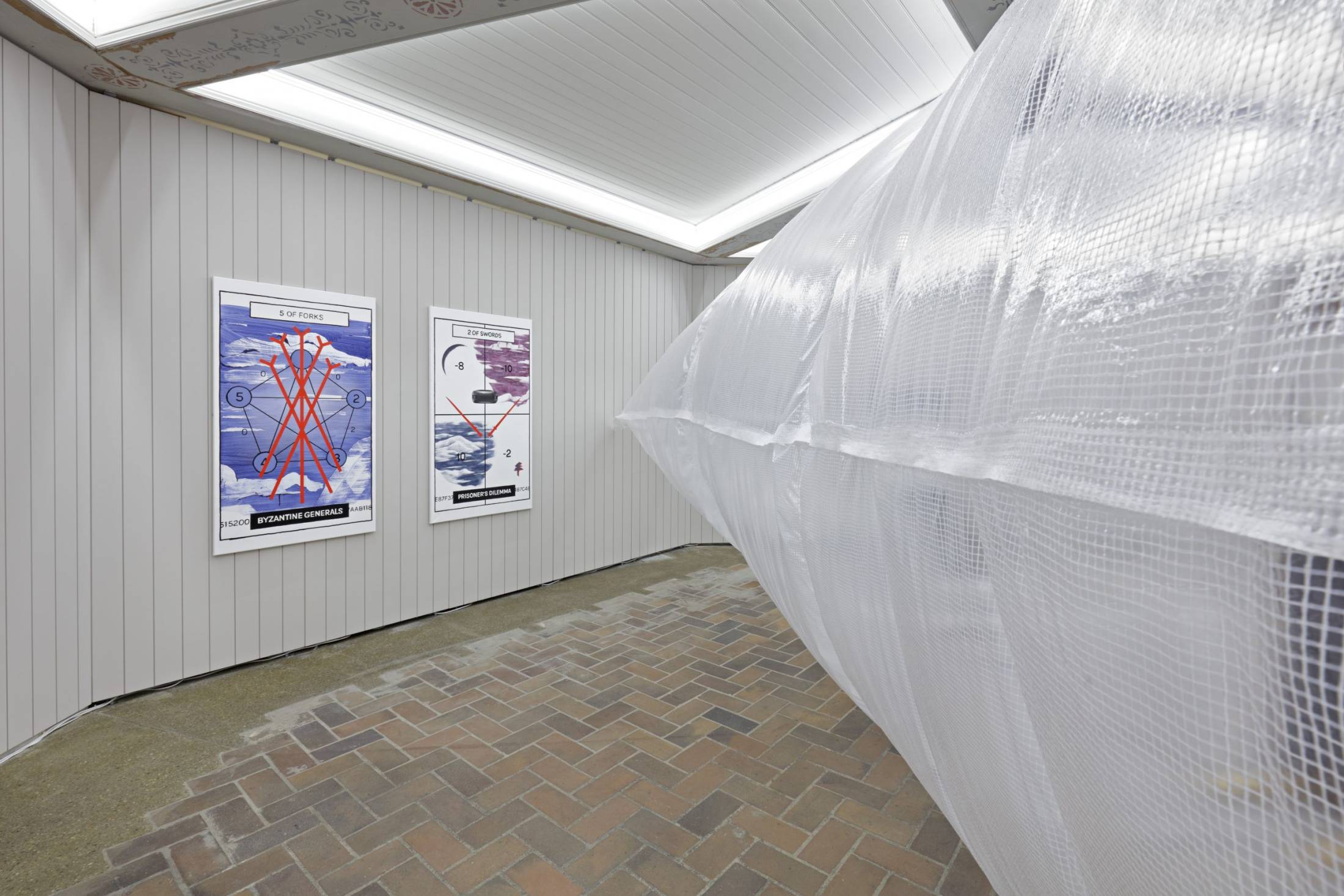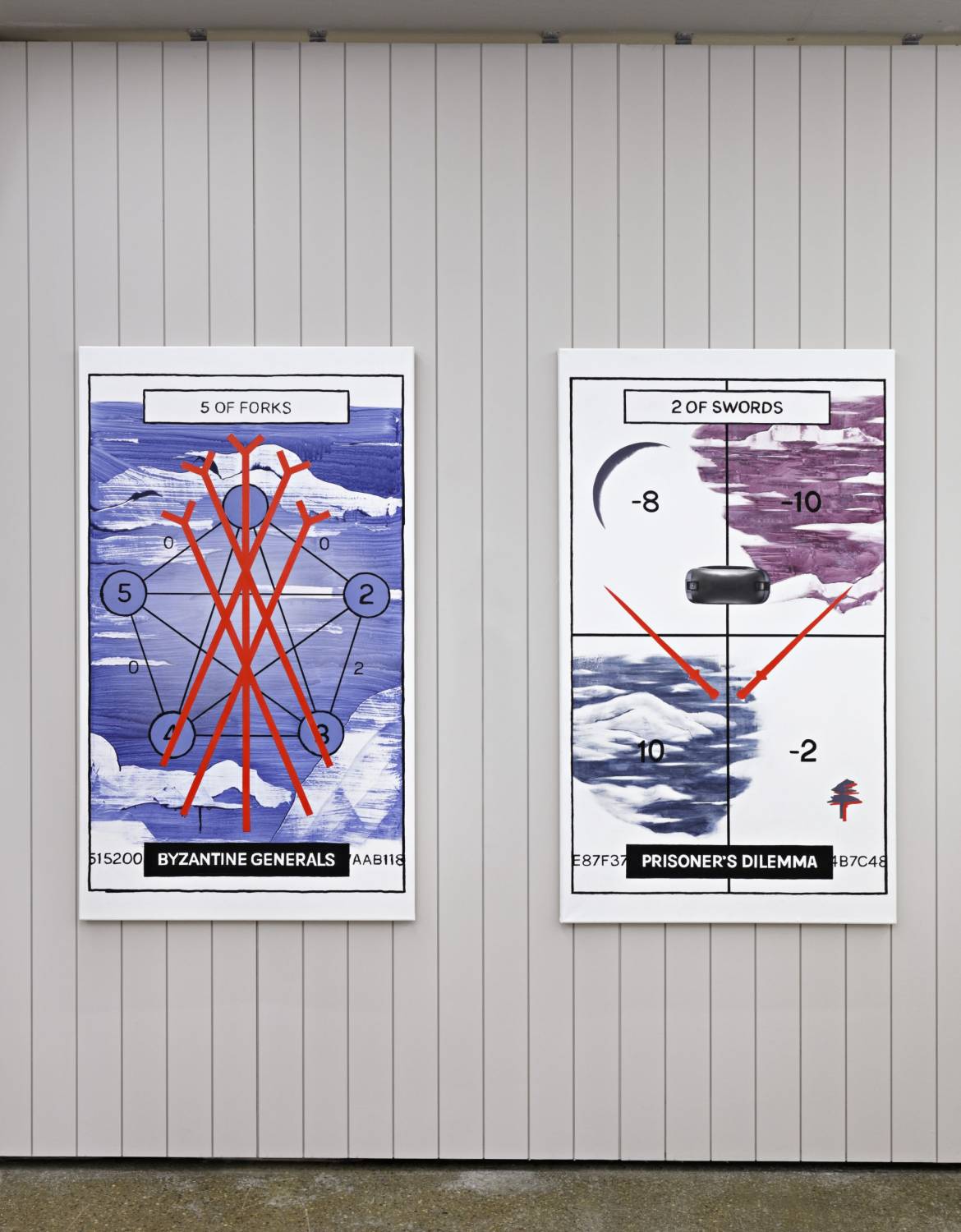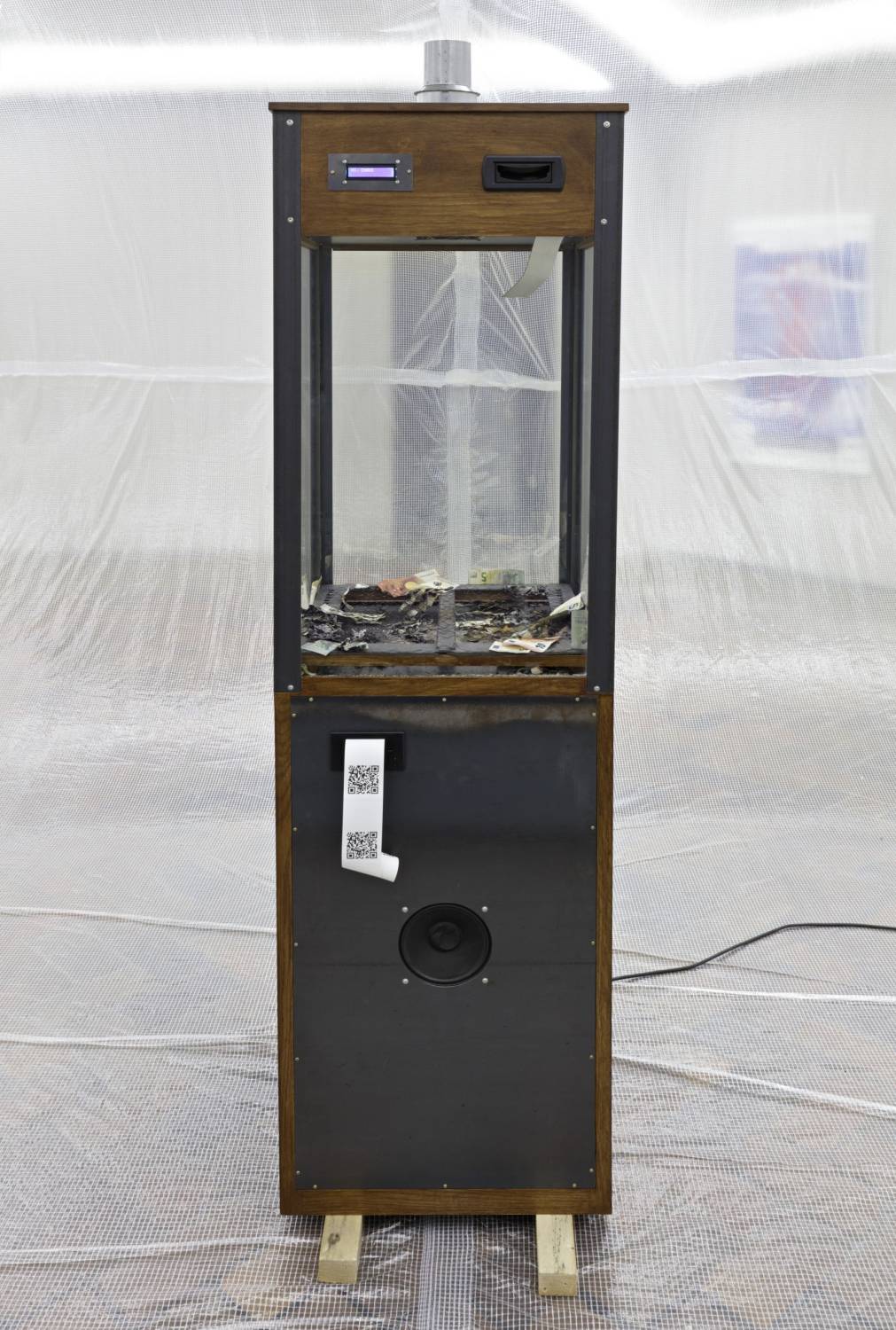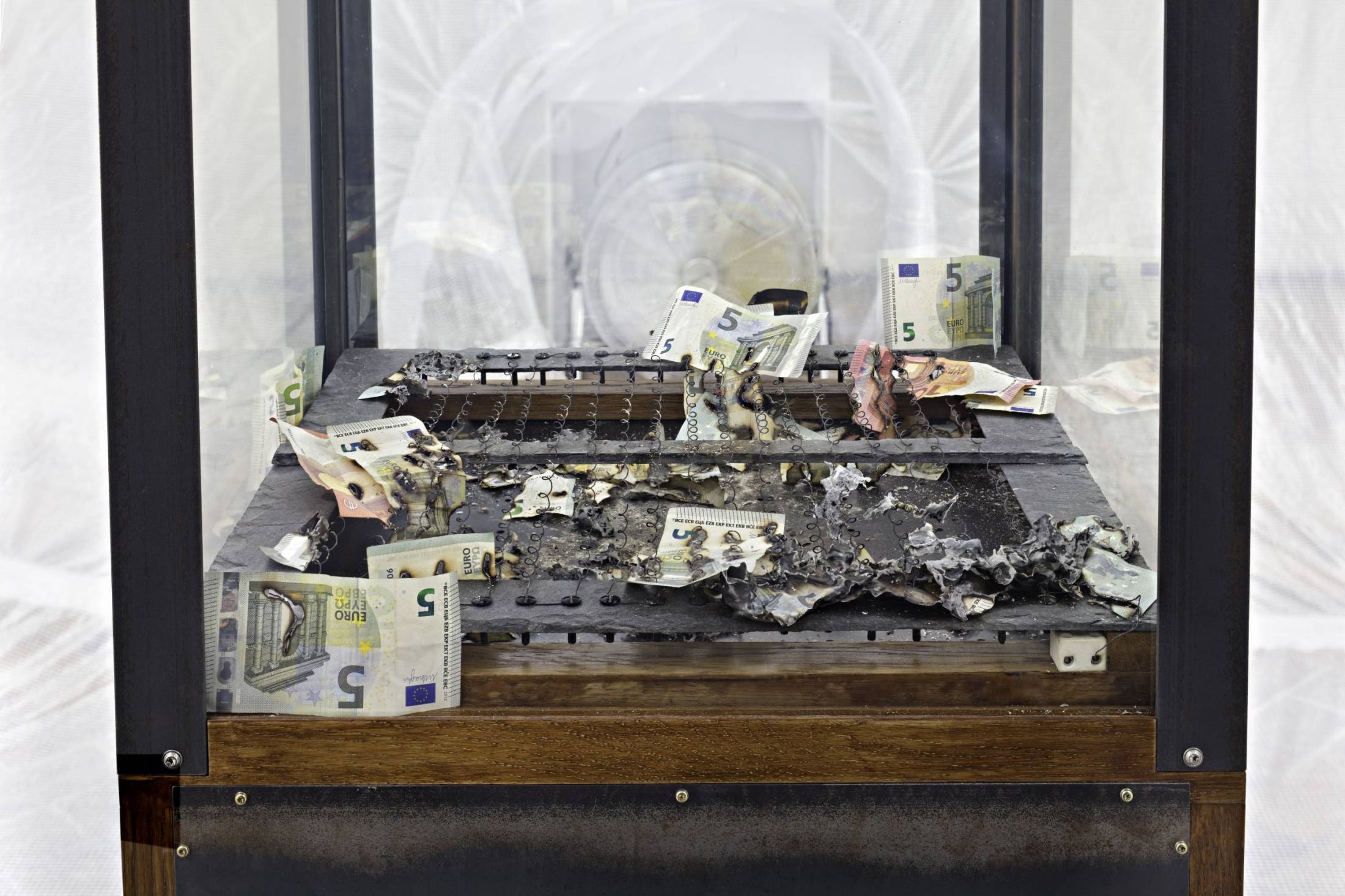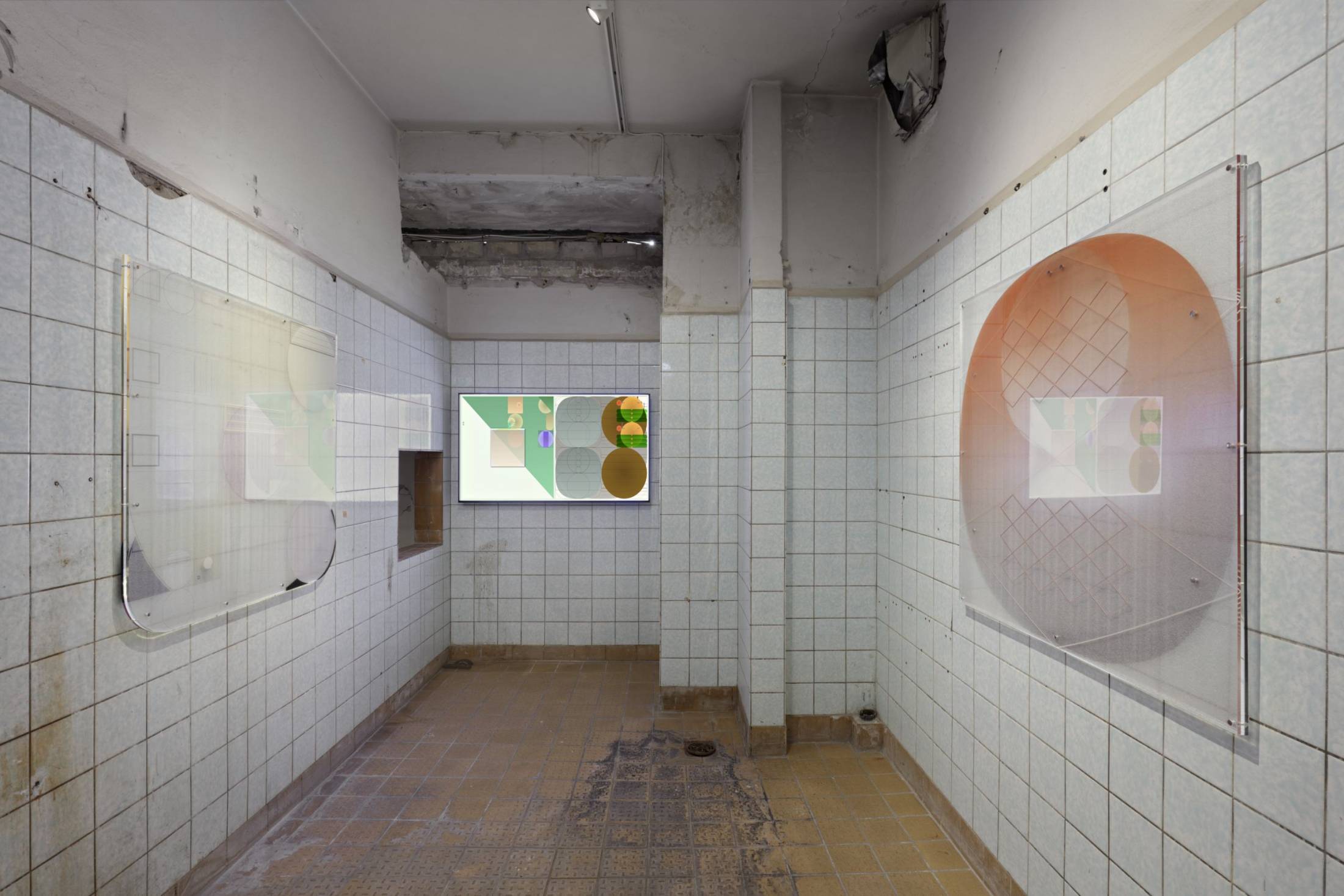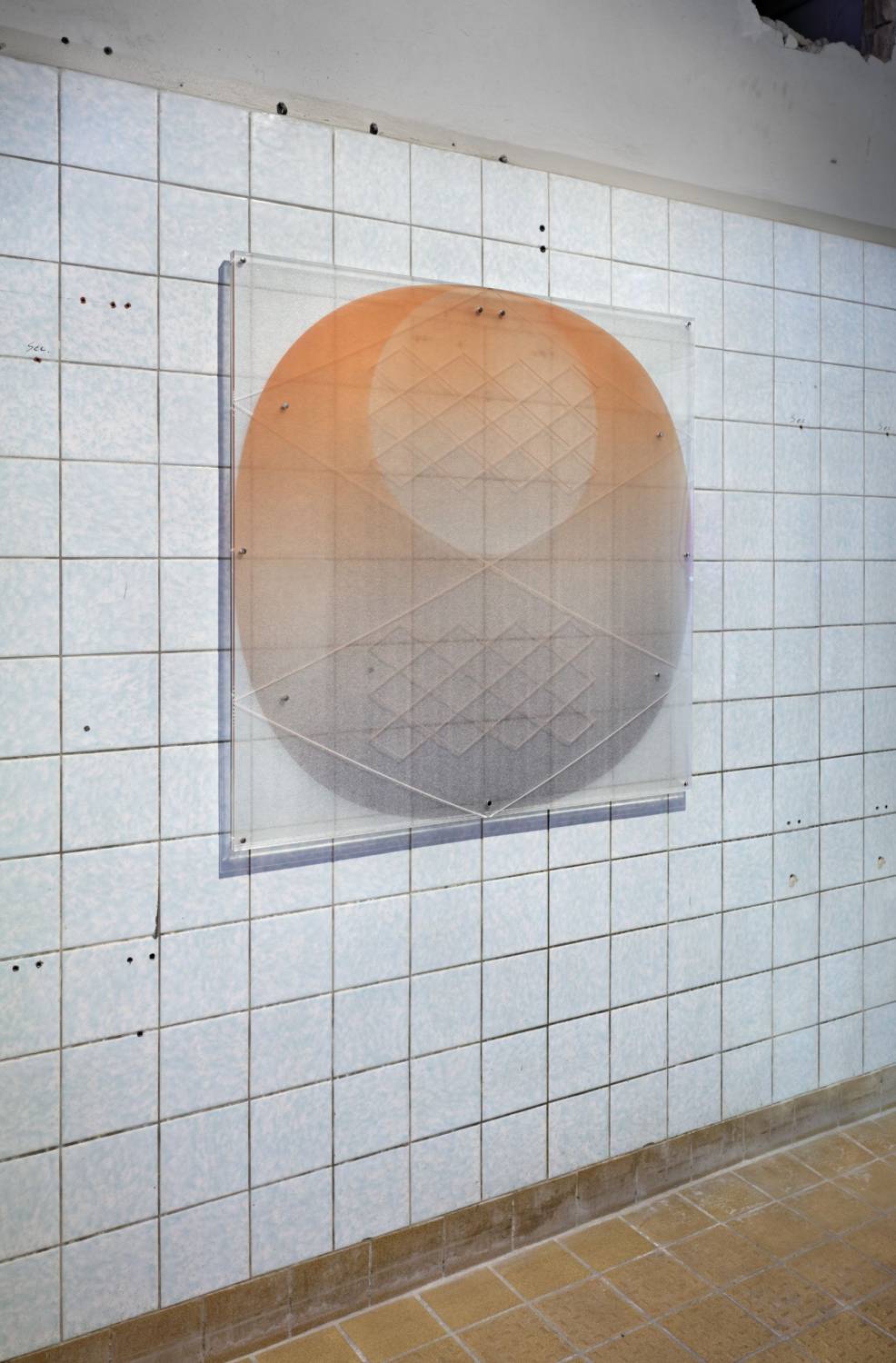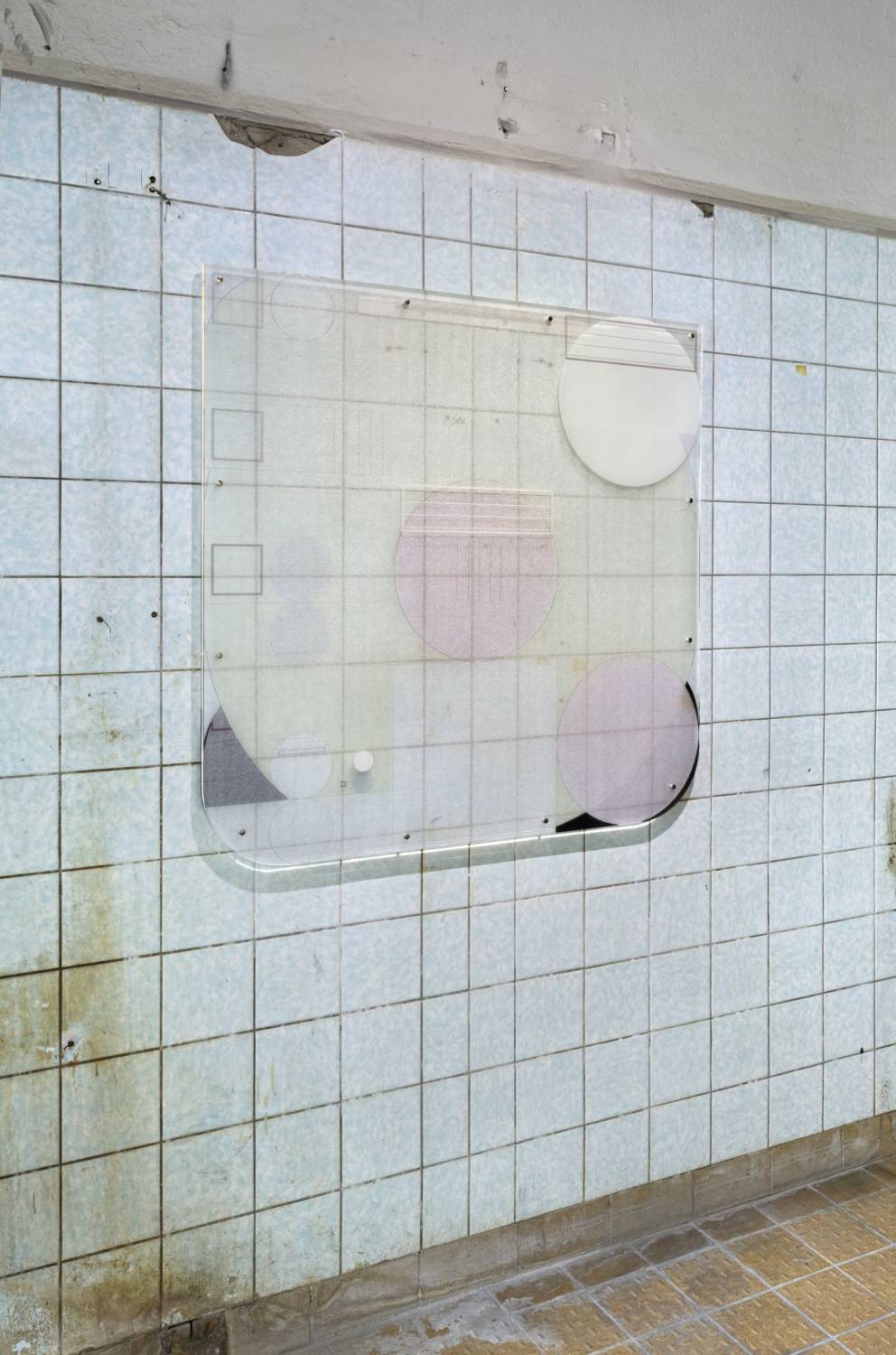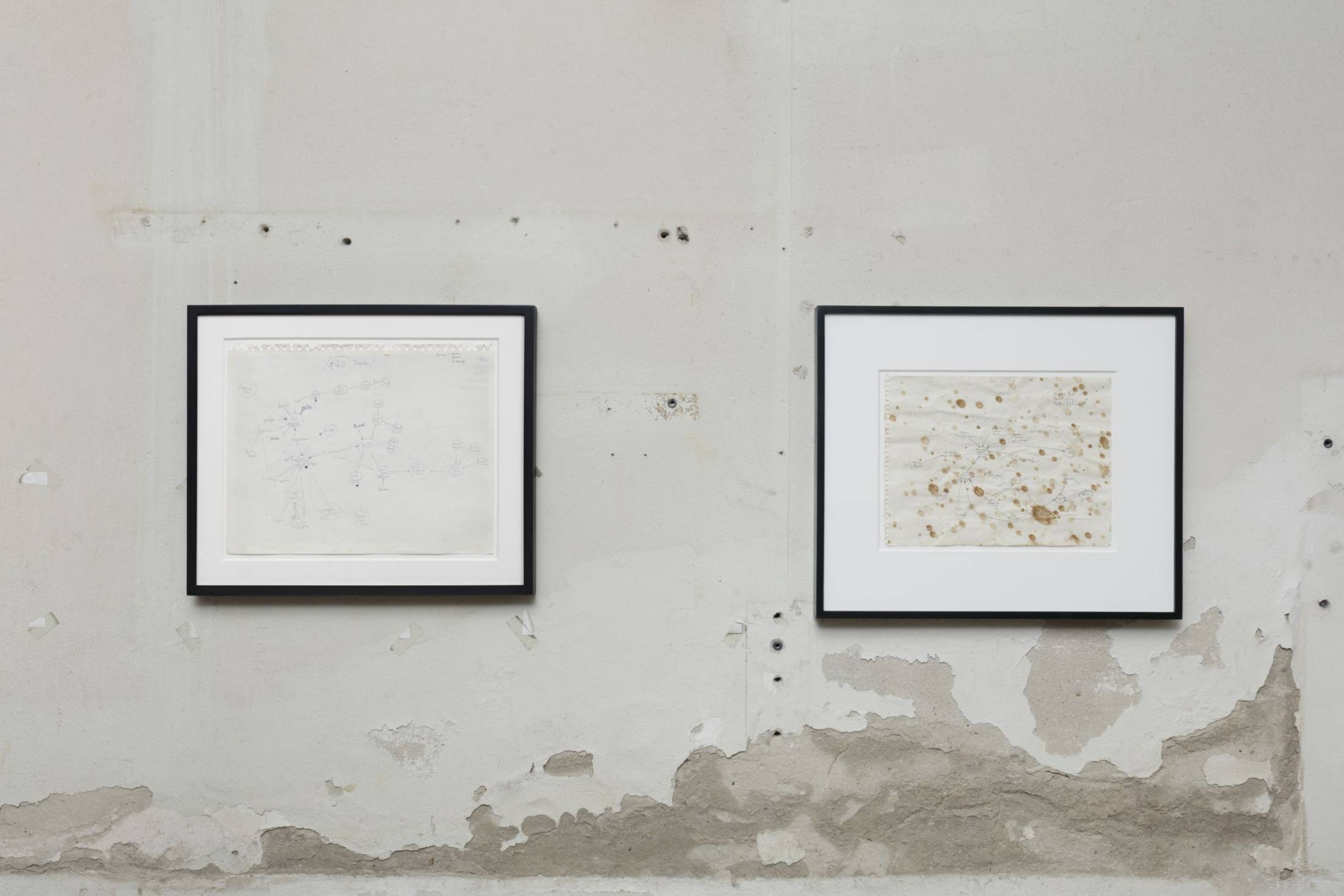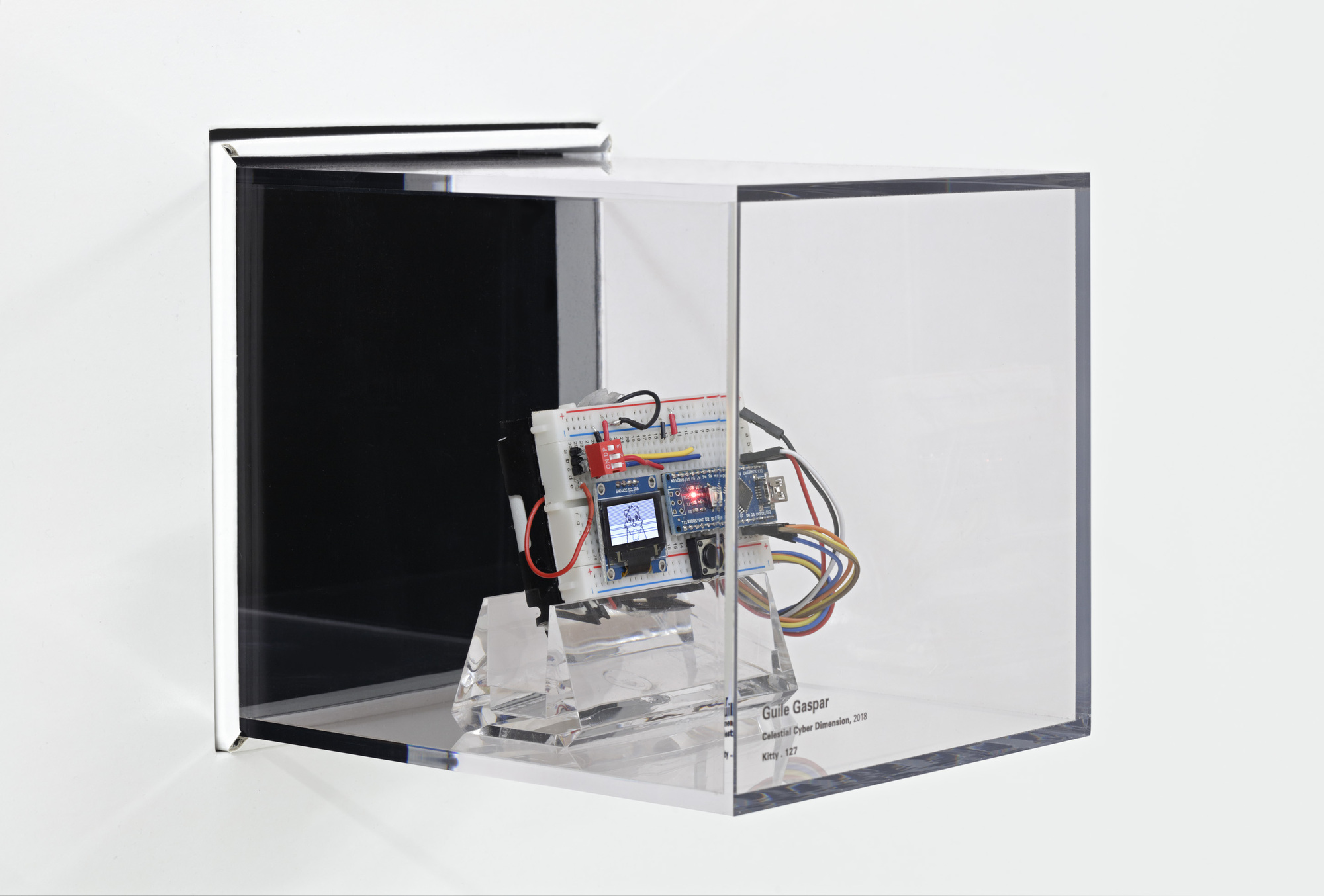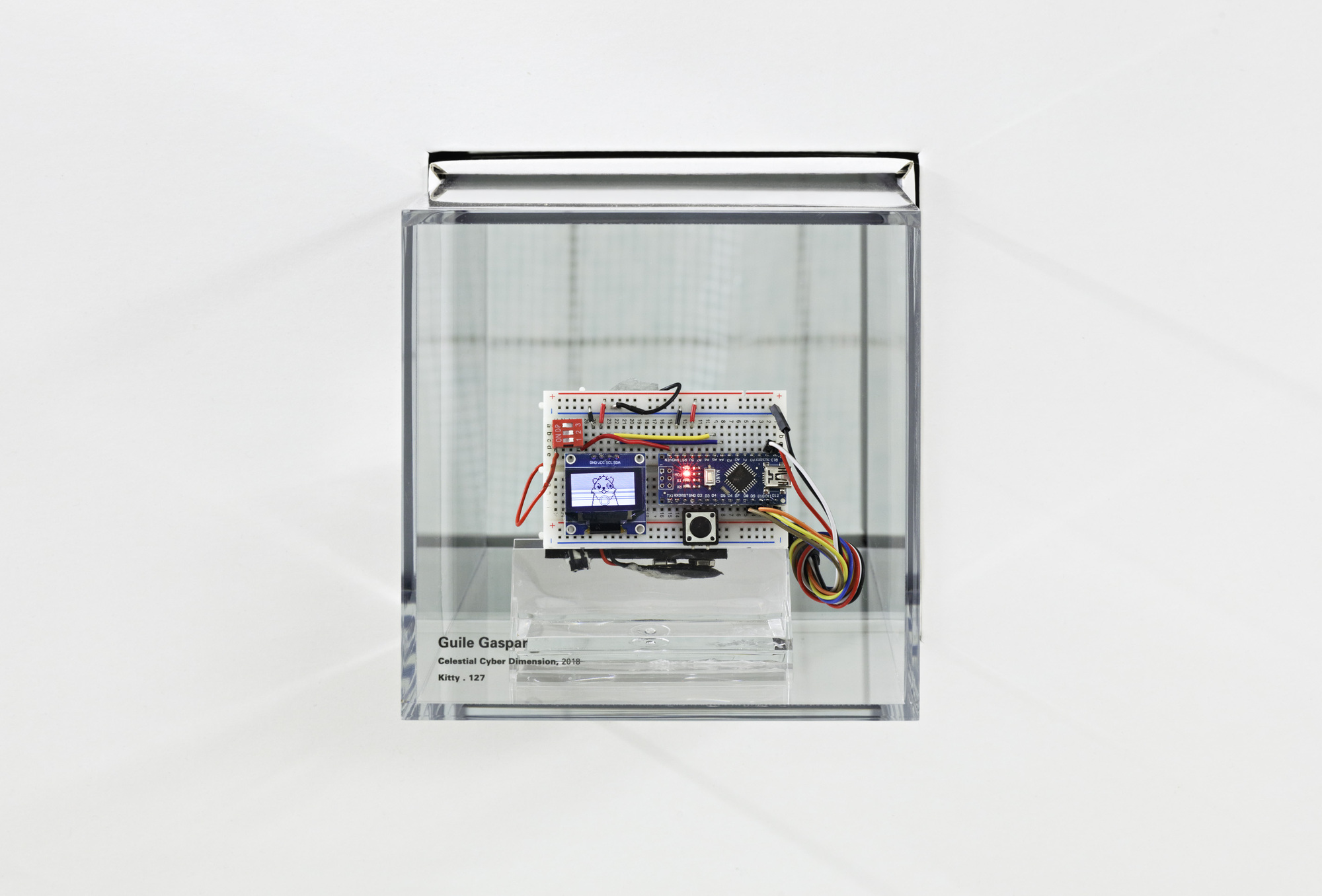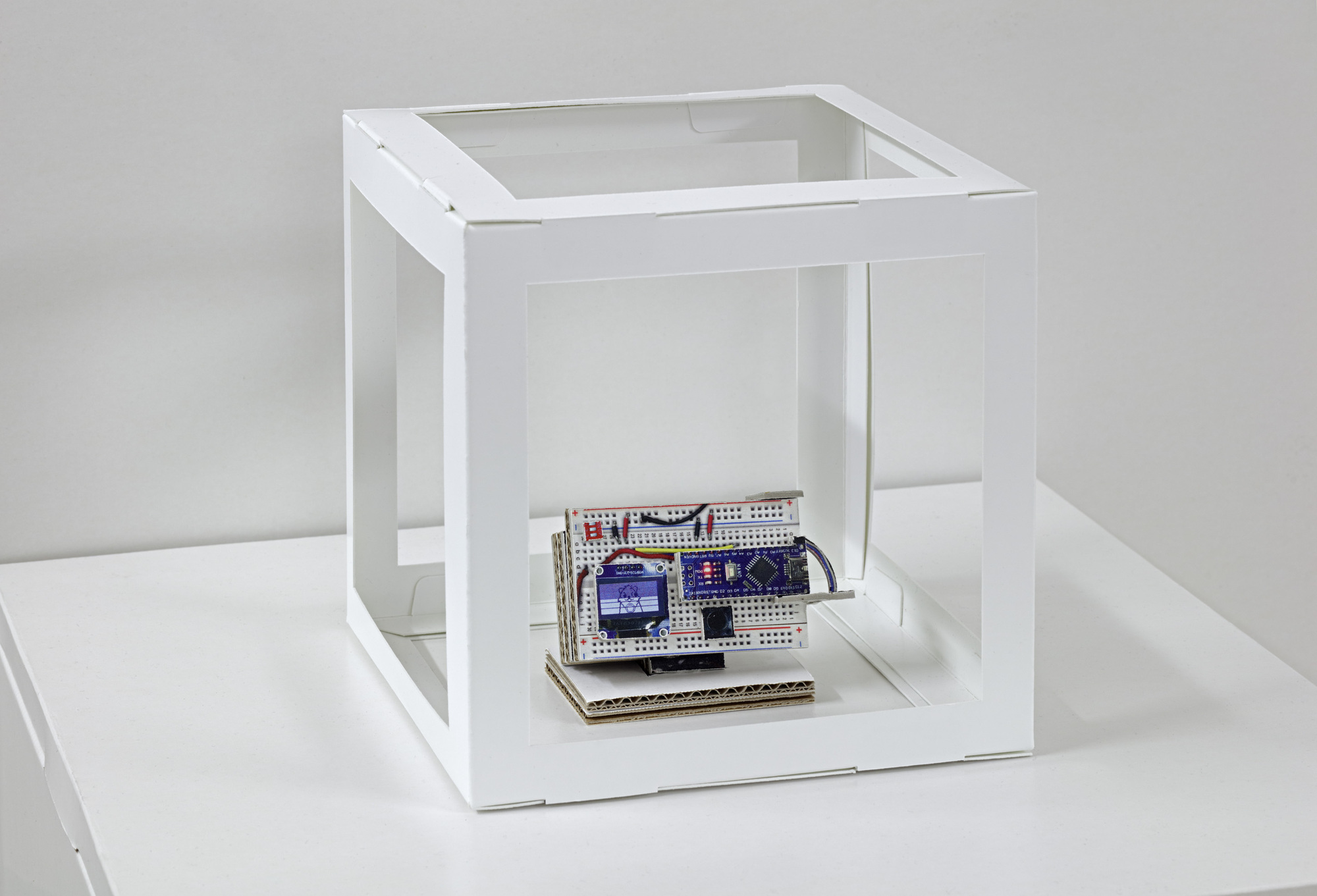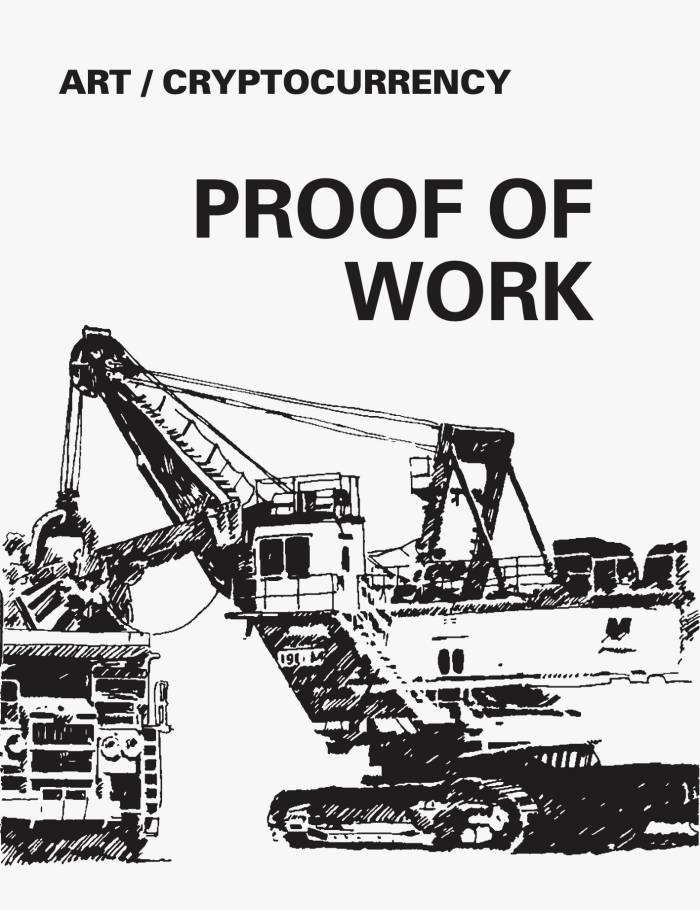Staged in the Schinkel Klause – the Schinkel Pavillon’s labyrinthine lower floor and a former GDR restaurant – this exhibition brings together works engaged with the culture around Bitcoin and blockchain, entertaining crypto as a possible new infrastructure for money, computing, and organizing. This includes artwork made by crypto builders, crypto experiments built by artists, and a small number of paintings and drawings that resonate with crypto, but predate Bitcoin. The organizers are also diverse, bringing to the show experience as technologists, artists, and curators – often in combination.
Rethinking decentralization, consensus, secrecy, privacy, religion, and societal and/or organizational structures has become popular in circles that discuss and explore the possibilities of blockchain-related systems. Berlin is a busy node in an international network of crypto-interested producers, gathering around amorphous discussion groups. The online group Crypto Circle – who use the office chat platform Slack to share ideas – various events, and collective “co-working” office spaces like Full Node in Kreuzberg are examples of such self-selecting groups and spaces relevant to many of the positions featured in the exhibition.
A transparent curatorial structure was adopted for selecting the artworks in the exhibition and reflects an interest in distributed decision making. A series of creators-as-decision-making-nodes were invited to propose positions they felt resonated with blockchain, pushing back on the idea of curating as a singular point of centralized decisionmaking. The result is a partial picture of activity in this area that is formed by a pre-defined organizational protocol. An organizational diagram is produced and exhibited alongside the exhibition, a record of this structure. The exhibition aims to highlight a non-representative cross section of the artistic activity being done in the wake of blockchain‘s emergence.
„Proof of Work“ takes its title from the decentralized process behind Bitcoin and other blockchain-based cryptocurrencies. It is the name of the consensus algorithm used to confirm transactions and produce new “blocks” on the “chain,” or ledger that makes up a blockchain. From the Bitcoin wiki: “A Proof of Work is a piece of data which is difficult (costly, time-consuming) to produce but easy for others to verify and which satisfies certain requirements.”
